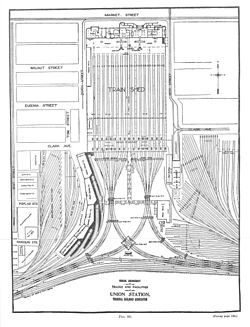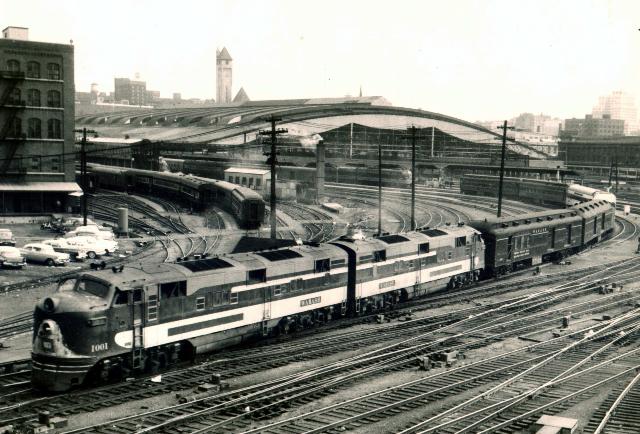I will have to admit overlooking the Bernalillo County/International Sunport Rail Runner Station when I pulled together my overview in 2016.
And, the Sonoma-Marin Area Rail Transit system came on line in 2017. So, I missed that one, too.
I will have to admit overlooking the Bernalillo County/International Sunport Rail Runner Station when I pulled together my overview in 2016.
And, the Sonoma-Marin Area Rail Transit system came on line in 2017. So, I missed that one, too.
DFW has the TRE as well, about 5.5 miles south via shuttle bus. An interesting breakdown would be to compare how many airports in the US have an in or near-terminal station (walking distance) to those who have a dedicated shuttle bus. I think this would put RDU’s station into perspective. Another comparison would be be how many transit lines terminate at the airport vs continuing beyond.
Agreed. Newark, LaGuardia, and JFK were all off the beam with respect to alignment to the intact legacy rail corridors.
AirTrain Newark was an airport circulator monorail which was extended to intersect with the NEC. The technology used was a mistake and prone to frequent breakdowns. Having reached its 25 year EOL, it’s going to require a $2B replacement of its current 3 mi length.
AirTrain JFK was a forced fit to connect up the MTA and LIRR at a cost of $2.6B over its 8.1 mile length. It works, but it hasn’t quieted the dreamers to get a one-seat ride from Manhattan.
And, AirTrain LaGuardia is a planned 1.5 mile long people mover whose cost has ballooned to at least $2B. And, it still will require a transfer from Willets Point in Queens, since a one-seat ride from the terminus of the BMT Astoria Line has been fought by generations of NIMBY’s.
That’s an easy fix. Can add that this afternoon.
Not sure why you couldn’t to a spur from Morrisville to the airport. For now do buses but plan for a spur in the future. Some trains run straight Raleigh Durham routes, skipping the airport. Especially during rush hours. Others Take the spur to the airport and back.
In reality, this wouldn’t be much different than running a dedicated shuttle bus, other than than the benefits of a dedicated right-of-way. (and obviously mode of transportation and associated cost.)
I saw a statistic somewhere (I can’t find it now) that nationally, airport transit link usage generally averages about 1-2 percent of the airport’s passenger count over the course of a year. Assuming RDU has 12 million pax per year, this breaks down to about 330-660 people a day using the airport link. That assumes the train operates seven days a week. The expense involved with building a dedicated rail line won’t be justifiable for that low of a ridership.
Also, shoehorning a rail right-of-way into RDU’s terminal complex has never appeared in any of the Airport Authority’s published plans. Whether they have considered or not, they’ve never shown it as an option. So, I would venture an opinion that they don’t desire that solution.
Exactly. Maybe we could justify a bus-only flyover somewhere to let buses get to the airport from the RTC or Bus on Shoulder lanes without going through any stoplights. Rail to the airport is not something I see as making sense here any time within the next 25 years.
I am on the tired side today, does anyone remember if that new “huge” project in RTP include a “place/space” for future rail of any type? Or am I thinking of that older project called the Metro Station which was to be a combination of office, retail, parking and rail? 




…more importantly, that big of a change from published plans means another expensive and time-consuming review process through the FAA.
To be fair, though, getting rail in RDU is probably the easiest part; there’s a strip of land near Terminal 1 that’s basically begging for rail alignment. (The Vision 2040 plan just pictures this area to become a parking deck extension or a lazy way to separate traffic to Terminal 2. This makes me think this plot of land won’t exactly be missed if it’s repurposed)
…but that still doesn’t answer what I don’t understand why it’s hard to see: how tf do you connect rail between RDU and NCRR/NS? (remember that commuter rail is “heavy”, so you can’t just snake between buildings/highways like you could for light rail)
I think people are saying this is a geography/geometry problem. Not an “omg guys we just gotta wish harder” problem.
EDIT: I tried to take a stab at it here. It’s not flat-out impossible, but it’s prohibitively impractical once you factor in things like physics and eminent domain lawsuits.
Yeah, you’re probably thinking of that “RTP Metro Center” that quietly disappeared.
…but the commuter rail study’s still looking into at least one station in RTP (just read the study). It’s hard to tell if that’ll be development-friendly, though, let alone relevant for RDU.
That’s absurd. I40 is around 300,000 or so. I just can’t see how this is possible.
Not to mention the basement level of the old Terminal C garage being held in reserve for a future use.
This is also true. I just chose Terminal 1’s extra space, since that doesn’t get rid of any existing landscaping (…though let’s be honest, who would miss the little spiral of bushes in the left side of that image lol)
IIRC, the busiest road in the US is I-405 in Southern California, which carries around 500,000 per day, so that Capital Blvd. number is a joke. Even the George Washington Bridge in NYC only carries about 300,000 per day across 14 lanes of traffic.
@CanesFan So, see the updated list. For those airport and transit systems which are proximal to each other, the distances for passengers to shuttle from the rail/LRT station to the airport terminal complex is anywhere from 0.5 to 5.5 miles.
(Added the Terminus/Through interface style column)
Thanks. I didn’t mean for you to have to do all that work.
No biggie. I did a lot of this back in 2016. Just a matter of updating some things.
What’s interesting is that I can’t easily locate the exit ridership information for the specific airport stations. Would have thought that somebody else would have already done that.
Some interesting takeaways from the data. With just a few exceptions, virtually all of the through stations require either a shuttle bus or APM to connect the rail station to the terminal. Nearly all of the systems with an in-terminal train station are at the end of the given rail line.
Correct. The same could be said for most of the major train stations in the US. If it was a terminal, then the head house would sit beyond the bumpers. If it was a through station, then the head house would be adjacent to the main line with a concourse running perpendicular over/under the tracks.
The one exception to this paradigm was Saint Louis Union Station. The head house was situated adjacent to through tracks. But, the train shed did not straddle the through lines. Everything going in/out had to traverse this screwy stub-ended, double-throated wye track layout. So, there was a constant stream of backing in and heading out maneuvers.
This is exactly what RDU offers as a challenge if one were to conceptualize a heavy rail link.

